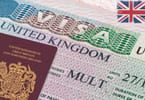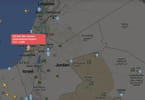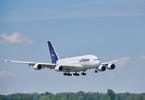SAO PAULO — Brazil’s leading airline, TAM SA, expects the country’s domestic aviation market to grow by up to 12% next year as incomes and employment levels continue to rise in Latin America’s largest economy and new promotions attract first-time, lower-income fliers.
“Economists are forecasting the economy will grow around 5% in 2010. We see the aviation market expanding double that, maybe two and a half times that,” said Líbano Barroso, who on Monday was confirmed as TAM’s chief executive officer after having served as acting CEO since October.
Attracting first-time fliers with easy payment options is one of the keys to raising growth levels in the $6.5 billion Brazilian air travel market, Mr. Barroso said in an interview.
Brazil’s domestic air traffic has nearly doubled since 2003, growing between 8% and 22% a year through 2008. This year, even though airlines had expected the economic slowdown to curtail demand, the latest data indicate passenger traffic grew 15%.
Demand has been bolstered this year by the expansion of smaller airlines, led by Azul Linhas Aéreas Brasileiras, which offered alternative routes at lower prices, prompting the main players TAM and Gol Linhas Aéreas Inteligentes to react with price cuts and expanded service. But the bedrock was the strength of internal demand throughout the economic slowdown, which was driven by rising working-class and middle-class salaries and spending.
TAM and the other airlines are now seeking to tap deeper into this up-and-coming consumer group by offering tickets in installments.
Earlier this month, TAM announced agreements with banks Itau Unibanco and Banco do Brasil to offer payment plans on tickets. Account holders can obtain tickets by making a small down payment and then making installment payments for up to four years after flying.
The goal is to make it flying an alternative to taking the bus—the most common way average Brazilians travel. Since the 1940s, Brazil has experienced mass migration from the rural northeast to far-off urban centers such as Sao Paulo and Rio de Janeiro in the southeast. As a result, at Christmas and other holidays it is common for workers to travel two or three days by bus to visit relatives.
Although plane tickets are still more expensive than bus fares, they offer value in time saved. The average price for a ticket for the 1,680-mile flight between Sao Paulo and Recife, for example, is between $120 and $200; the average salary in Brazil is about $770 a month.
“The fact that payments for the tickets are within people’s monthly budget acts as a great stimulus,” said Mr. Barroso.
Gol was the first to adopt the strategy of easy payments about four years ago. Its program now has 1.8 million members and its popularity has forced other airlines to follow suit.
Meanwhile, airlines are looking to develop alternative routes to expand their business, while finding ways to manage the crush at Brazil’s hub airports in Sao Paulo, Rio de Janeiro and Brasilia.
TAM announced last week that it had bought ailing small regional operator Pantanal in a deal valued at 13 million Brazilian reais ($7.3 million). Pantanal operates three turboprops and has just 0.2% of the domestic market. But it holds a valuable asset: 196 slots at Congonhas in Sao Paulo, Brazil’s busiest domestic airport.
Congonhas’ proximity to Sao Paulo’s business centers makes it the preferred destination for executives, which make up the majority of passengers on local flights. But heavy restrictions on takeoffs and landings at Congonhas because of a short runway and its built-up environs mean that slots are at a premium.
“We are going to beef up Pantanal in order to meet demand for smaller destinations,” said Mr. Barroso, although he didn’t name cities targeted for expansion.
In recent months the price war with Gol, Azul and other competitors has cooled and profit margins have improved. TAM reported third-quarter profit of 348 million reals, recovering from a loss of 663.6 million reals in the quarter last year.
WHAT TO TAKE AWAY FROM THIS ARTICLE:
- But heavy restrictions on takeoffs and landings at Congonhas because of a short runway and its built-up environs mean that slots are at a premium.
- As a result, at Christmas and other holidays it is common for workers to travel two or three days by bus to visit relatives.
- Since the 1940s, Brazil has experienced mass migration from the rural northeast to far-off urban centers such as Sao Paulo and Rio de Janeiro in the southeast.






















